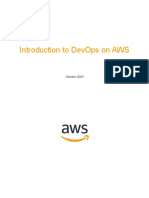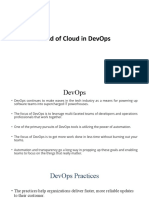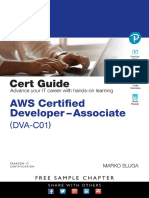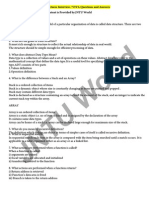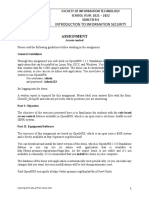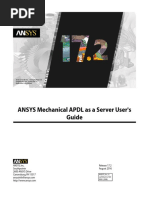0% found this document useful (0 votes)
15 views5 pagesExtended AWS DevOps Guide
The document is a comprehensive guide on AWS DevOps, covering key topics such as cloud computing, DevOps principles, AWS tools, CI/CD processes, and infrastructure management. It includes practical examples, benefits of DevOps, and hands-on projects for building CI/CD pipelines on AWS. Additionally, it features multiple-choice questions to reinforce understanding of the material.
Uploaded by
dreambot.diariesCopyright
© © All Rights Reserved
We take content rights seriously. If you suspect this is your content, claim it here.
Available Formats
Download as PDF, TXT or read online on Scribd
0% found this document useful (0 votes)
15 views5 pagesExtended AWS DevOps Guide
The document is a comprehensive guide on AWS DevOps, covering key topics such as cloud computing, DevOps principles, AWS tools, CI/CD processes, and infrastructure management. It includes practical examples, benefits of DevOps, and hands-on projects for building CI/CD pipelines on AWS. Additionally, it features multiple-choice questions to reinforce understanding of the material.
Uploaded by
dreambot.diariesCopyright
© © All Rights Reserved
We take content rights seriously. If you suspect this is your content, claim it here.
Available Formats
Download as PDF, TXT or read online on Scribd
/ 5







